PREVIEW – Teenage Mutant Ninja Turtles made a big impression on Seth Rogen at a very early age. “The animated series came out in 1987, when I was five. The first movie came out in 1990, when I was eight,” he says. “It was perfectly geared toward someone my age and I loved it. They were funny. They were referential. I started taking karate probably because of the Turtles. I was just kind of obsessed.”
Rogen was far from the only one. Teenage Mutant Ninja Turtles has been thrilling generations of fans for decades. The adventures of four turtle siblings – Leonardo, Michelangelo, Raphael and Donatello – who were turned into wisecracking mutants after contact with a strange neon ‘ooze,’ has inspired a long-running comic book series, hit cartoon shows, a huge toy line, multiple video games, and six theatrical releases that have collectively made over $1.7 billion at the global box office.
Not every fan, of course, gets a call asking them if they’d like to create the next chapter of the story of their favorite ever characters. But when Brian Robbins, President and CEO of Paramount and Nickelodeon, called Rogen to ask him if he’d like to discuss making a new Turtles movie, Rogen already knew exactly what he wanted to do.
“It’s Teenage Mutant Ninja Turtles,” Rogen says. “Of all those words, the teenage part was the most under-explored, and the most interesting to me.” And that is how Teenage Mutant Ninja Turtles: Mutant Mayhem began. Rogen saw in it a Turtles movie made with a genuine teen spirit – breaking all the rules, ripping up the playbook and doing everything on its own terms. A film made with the same anarchic panache that led to their creation 40 years ago.
THE BIRTH OF THE TURTLES
The Teenage Mutant Ninja Turtles were created almost by accident, in November 1983, when friends and comic book authors Kevin Eastman and Peter Laird were hanging out in their ‘studio’ (aka the living room of the apartment they shared). At the time, they were just trying to make each other laugh.
“The Turtles came out of love, passion and a late-night bout of goofiness,” says Eastman. “I’m a big fan of Bruce Lee. I thought, ‘If Bruce Lee was an animal, what would be the silliest animal he would be?’ And so I did this drawing of a turtle standing upright with a mask on, nunchucks wrapped around his arms.” It got the desired reaction from Laird, so the pair kept the gag going. “I did a pencil sketch with all four Turtles, each with different weapons,” continues Eastman. “Pete inked it in and added ‘Teenage Mutant’ to the ‘Ninja Turtle’ title. That was it. We fell in love with the idea!” The rest, as they say, is history.
The pair began to flesh out the idea, giving all of the Turtles distinct personalities inspired by their childhood friends. “They evolved out of comparisons to a group that I would hang out with in high school,” says Eastman. “One was the funny one, always cracking the jokes. One was more technical, taking apart clocks and building stuff. One was the self-appointed leader of the group, and then you had the one that would back you up in a fight. I loved the cross-section of these different personalities. They would be sibling-like, they’d have arguments, they’d be at odds.” But they’d always be there for each other too.
After dismissing various concepts for names, art history enthusiast Eastman landed on Renaissance painters. Leonardo, Michelangelo and Raphael came easily enough, but they disagreed on the fourth. “There was a discussion for about two weeks on Donatello because I liked the sculptor named Bernini better,” says Eastman. “Donatello was almost named Bernini.”
Eastman and Laird suspected the Teenage Mutant Ninja Turtles had the potential to carry a comic book, but they thought it would likely be a one-off. So, in 1984, they funded the production of the first Teenage Mutant Ninja Turtles issue, with not much in the way of thought beyond the immediate.
“When we did the first issue of the Turtles, whether we sold one copy or a hundred copies, we did it, we had a comic book,” Eastman remembers of their logic. “And then this weird thing happened, where the first issue sold out and then people wanted a second.”
It became far more than a mere second issue. The comics became a huge hit – they’re still being published today – and in 1987 the animated series arrived, opening up the Turtles to a whole new audience. That little living room goof had become a cultural phenomenon.
Some of those fans even grew up to became filmmakers who – and ask any of them, their childhood selves would not believe this – would one day be making their own Turtles movie. One that would take the characters they once loved to a whole new dimension, evolving and revolutionizing an art form while they were at it.
ASSEMBLING A NEW TEAM
While Seth Rogen was thrilled to get the call from Brian Robbins, it took him and his producing partner, Evan Goldberg, completely by surprise. “To be clear, nobody has ever called us and asked us to make a valuable IP (intellectual property) into anything before,” says Goldberg. “This is not something we have happen.” But Robbins knew that this was exactly the right team to shape the next Teenage Mutant Ninja Turtles movie. Mainly because there is perhaps nobody in Hollywood with a better perspective on inherently teenage stories.
“Our company always makes one thing about kids in high school every year,” explains Goldberg. Under their production company, Point Grey Pictures, Rogen and Goldberg – along with fellow producer James Weaver – have produced such hilarious, smart teen movies as Blockers and Good Boys. They have a way of depicting kids authentically, and hilariously, which Rogen in part credits to forming the beginning of his career with Judd Apatow.
“My first thing I did was teenage, the TV show Freaks and Geeks,” says Rogen of the cult high school show, executive produced by Apatow and critically lauded for the way it portrayed kids that actually both acted and sounded real. “And then we wrote Superbad. I think a lot of my career has been intrinsically linked to the high school, teenage genre. I always thought it would be interesting to explore the Turtles in that way. Every version of them [so far] has been performed by adults.” He imagined a Turtles film in which these titular heroes in a half shell “just want to be normal teenagers and do normal teenage things.”
To help shape a Turtles movie with the wit and verve they wanted, Rogen, Goldberg and Weaver needed a director who could tell a story full of heart and humor, but who was also not afraid to break the rules. They were pointed in the direction of one man: Jeff Rowe, co-writer and co-director of The Mitchells Vs. The Machines.
“Phil Lord and Chris Miller [directors of The Lego Movie and producers of The Mitchells Vs. The Machines], who we’re very good friends with, said, ‘We made this Mitchells Vs. The Machines movie, and this guy Jeff is the co-director on it and, well, he’s incredible.’” says Rogen. “We met with him, and we just really hit it off.”
Mitchells followed an ordinary family as they found themselves having to save the world against a robot attack. And it had the kind of humor the producers wanted for Turtles – as well as the same kind of crazy creative freedom in the animation. “He didn’t force himself to exist within the rules or try to make it look like our world,” says Goldberg of what Rowe did with that movie. “Instead, he said, ‘It’s different and things go out of the lines and are a little less perfect than most.’” His imperfection somehow felt perfect.
Teenage Mutant Ninja Turtles: Mutant Mayhem producer James Weaver says that it wasn’t just the look and laughs that made Rowe their perfect man. His work also showed exactly the heart that this iteration of Turtles needed.
“Mitchells is an incredibly emotional story, too, and I do think that that was another thing that gave us a sense of, ‘Oh, this is the right person for it,’” Weaver says. “He wanted to make sure that there were real emotional stakes in the film. That it wasn’t just about saving the world.”
Rowe, essentially, had co-directed a film that was ostensibly about a robot invasion, but was really about a family working out their changing dynamic as their kids grew older. And that was exactly what this new Turtles needed to be about: four young outsiders trying to find their place in both their own family and the outside world.
To be fair, Rowe admits, he didn’t need all that much in the way of persuading. As a professed lifelong Turtles fan, when he heard there was a search on for a director for a new version of them, his head started spinning. “I thought, ‘That sounds like a dream project. I would kill to do that,’” Rowe says.
As it happens, Rowe thought he’d screwed up his big chance when he took two meetings about the movie that he thought “truly went terribly”. But they clearly went well enough that a follow-up meeting was arranged with Point Grey Pictures. “I can confidently say that that meeting went well, but it was a lot of tap dancing [from me] and, ‘Please, I love this! I will do a great job! Just let me do it!’” Rowe laughs. The job was his.
Rowe and his producers all agreed on the direction for the story, which would consider the siblings teenagers first, turtles second. Confined to the sewers because their adoptive father, the mutant rat Splinter (played here by martial arts legend Jackie Chan) believes humans will never accept them, the turtles just want to experience the outside world like normal teenagers.
When they meet a young wannabe reporter, April O’Neil (voiced by Ayo Edebiri) and learn of her plan to bring down the criminal mutant Superfly (voiced by Ice Cube), they sense their chance. If they can rid the city of crime, maybe the city will embrace them?
The teenage story was a lock. But then Rowe wanted to push the concept even further. What if the movie about teenagers looked like it was made by teenagers? “When he first pitched it,” laughs Goldberg, “we said, ‘Maybe… I don’t know, man. It sounds a little crazy’.”
DRAWING OUTSIDE THE LINES
It probably was a little crazy, at least at first. Rowe’s idea was that he wanted to make a movie that looked not slick and polished – like most CG movies – but as messy, fun and unpredictable as the story’s heroes. “We just wanted it to look like teenage drawings,” says Rowe, simply. “You know, the kind of drawings you did when you were in high school that have weird shapes and bad perspective but are lovingly rendered in places. And were always sincere.”
From a visual standpoint, that meant wild lines, wonky proportions, no symmetry – generally just a sense of being drawn with freedom and joy, rather than a need for what most animated movies would consider to be perfection.
After letting Rowe’s apparent creative craziness sink in for just a second, Rogen realized that he loved the concept, having personally seen too many animated movies that he had made in the past turn out looking exactly the same.
“[Normally, with animated movies], they pitch you the movie in a room and show you all this concept art, and it’s expressive and beautiful,” Rogen says. “Then you see the movie and it’s all been sucked into these perfect parameters and all those paint strokes have turned into perfectly rendered clouds that look photorealistic. I was just conditioned for it. We started seeing concept art for this movie, and it was some of the coolest concept art I’d ever seen. It was hand-scribbled, and it really didn’t stay in the lines. [But this time] they actually translated it into the world of the movie.”
When Rowe and production designer Yashar Kassai, who Rowe had worked with on The Mitchells Vs. The Machines, first discussed the look of the film, they looked back to the Turtles toys for inspiration. “When Jeff was interviewing me for the job, we were talking about the Turtles stuff that we loved originally,” Kassai says. “And we both said the Playmates box art of the original toy line. I think those illustrations, as goofy as they are, tell so much about a world. They are just the box art for a toy, but they’re also incredible. So, for this movie at least, that box art was so inspirational.”
Rowe calls Kassai the perfect man for this movie because of his endless imagination and creativity, and the fact that he doesn’t fall in line with what other animated films are doing. “He’s just brilliant with color and design,” Rowe says. “Something that I love about him, and his work is, it’s not typical for animation. It’s not the first choices or decisions you would make when you think about character design or color. But for this franchise, with its history, and that the Turtles have always been a little weird, a little left of center, Yashar was the perfect fit. I could not have imagined a better person to do the job.”
Doing something so out of the ordinary was a thrilling prospect for the movie’s animators, but it was also asking them to do something that had never been done before and to throw out every rule they’d worked to their entire careers. “We had to unteach our animator’s art school,” says executive producer Ramsay McBean.
“It was a really cool brief,” says character surfacing supervisor Anne-Claire Leroux. “It was like, ‘Remember when you were a teenager and bored in class, doodling in the margin of your notebook? That’s what we want’.” But that took some getting used to. As we all probably know, teenage drawings look nothing like computer animation, and when you’re animating on computers, it’s very difficult to achieve chaos. Computers, after all, love nothing more than order and logic.
“Generally speaking in an animated film you’ve got symmetry,” says Jacques Daigle, head of character animation. “Computers work better when you can split a character right down the middle and mirror it.” That was not going to work on Teenage Mutant Ninja Turtles: Mutant Mayhem. “Not one character in this movie is symmetrical.” In other words, it took a gargantuan amount of hard work, endless imagination and a lot of mistakes to settle on a style that everyone loved. Rowe, for one, knew that he was asking something close to impossible.
“As a director, my brief boiled down to: ‘If you’ve seen it before, just do something different,’” says Rowe. “At the start, I was like, ‘That’s a cliché. That’s a trope… That looks too good. You did a really good job and it’s really beautiful – I hate it’.”
Kassai remembers that the key to ultimately finding the style was embracing the idea that this wouldn’t be a movie where everything had a uniform look. The clashing of different ways of drawing was kind of the point. He needed every animator to draw with the same spirit, not with the same style.
Kassai recalls looking at Rowe’s original mood boards, which were covered in doodles. “There was something really charming and endearing about that,” he says. “It’s also familiar to everybody because everyone has drawn like that.” So, he encouraged the artists to run with that, to doodle and find something fun, not something neat. “Imperfection is what we chased,” he says.
That encouragement, to leave in lines that looked like mistakes, to color outside the lines, didn’t exactly feel natural, to anyone on the team. But it resulted in gold. “It was weird policing the art department by telling them to draw worse!” Kassai laughs. “We didn’t want elegance. We wanted fun and excitement. Something experimental… I don’t think I’ve ever had so much fun drawing on a movie.”
Keeping things looking loose involved some very clever and complex technical work. As character surfacing supervisor, Anne-Claire Leroux’s job was to lead a team of artists who would create the textures and surface details on every character, prop and set. Usually that would be about getting everything perfect. Here, it was the opposite.
“At the start, the most common note from Jeff was ‘It looks too CG’,” Leroux says. “We needed to break that.” That involved hand-painting lots of elements – a very unusual job on CG animation – to create ‘imperfections’ in various parts of the frame. Elements like fire and water, and hand-drawn matte backdrops.
Jacques Daigle, head of character animation, remembers the moment he realized just how special this movie could be. “I think everybody started seeing what it could be when we started seeing Yashar’s designs of the characters,” he says. “That was cathartic, feeding our creativity. We didn’t want to do something run of the mill. Looking at these beautiful designs, we realized we had such an opportunity to have a sort of punk freedom to try something different.”
In the designs of the Turtles themselves, it was important to everybody that they be given more individuality than in any other Turtles movie or TV show to date. In fact, they wanted them to be so distinct that you could tell them apart even without their colorful headbands. Leroux says the designs became “so much better” when they knew they’d be voiced by actual teenagers, and when they veered away from the very muscular look the Turtles have had in some previous movies, to make them look now like they were still growing into their bodies. “There was a cap on the amount of muscle mass they could have,” says Rowe. “It also informed their posture and the way they carry themselves.”
Throughout, the team looked for ways to convey character that weren’t obvious or cliched. For example, Donatello is the ‘nerdy’ brother, who loves technology and his own company. But nobody wanted to make him the stereotypical nerd.
“There’s this tendency to take the ‘nerd character’ and just have them push their glasses up [on their face] all the time,” says Rowe. “I was a nerd in high school and my friends and I weren’t like that. It was always more, ‘Have you seen this obscure anime?’ With Donnie it felt appropriate to make him a super-fan of obscure things. He lives in his headphones and doesn’t talk to other people and is maybe quite cold about human interactions sometimes.”
That desire to veer away from cliché was rigorously observed in every aspect of the filmmaking. When Rowe was looking at sources of inspiration for the shooting style of the movie, he went to some surprising places, gravitating towards the work of Spike Jonze, Paul Thomas Anderson and Alfonso Cuaron, in particular.
“When Jeff started talking about Spike Jonze and Paul Thomas Anderson, I found that to be fascinating,” says head of cinematography Kent Seki. “With Spike Jonze, it was all about that almost documentary, authentic feel. With Paul Thomas Anderson, it was about the energy of his camera, especially in the early stuff, like Boogie Nights or Magnolia. We talked about how our movie could be an evolution of that.”
Rowe says he took particular inspiration from Cuaron’s Y Tu Mama Tambien, for the brilliant way that film made you love just being around its young characters. “The way he uses long takes invites you to hang out with these characters,” Rowe says. “Not because something exciting is happening – it’s not trying to be sensational – but because it just doesn’t want to separate the audience from the experience of being with these people. It really helps you feel intimate with them. That’s what we wanted people’s relationship to be like with our turtles.”
Rowe and Seki settled on the idea that early parts of the film would look as if they’d been filmed by teenagers, with simple camera movements and a sometimes-juddering handheld look. And the lighting would look simple, not “Hollywood flashy”. More than anything, it all came back to that Spike Jonze, unpolished look.
“If you look at a Spike Jones video of skateboarders, there is no beauty lighting,” says Ramsay McBean. “There is no light that makes them light up. They’re just getting a camera and hoping to capture something.”
As the film progresses, and the Turtles mature, the look of the film develops. “As the Turtles
become heroes, we elevate our camera style to support the subtext of their maturation,” says Seki. “Plus, we shot their world and the adult world in two different ways. Their teenage world is frenetic. In the adult world, our camera becomes more formal.”
Ironically, every single detail of the filmmaking process was planned to the most meticulous degree, to achieve a look that seemed like it had all happened purely by chance. But if the Teenage Mutant Ninja Turtles: Mutant Mayhem filmmakers thought that finding the look of the film had involved some journeys into total chaos, it turns out that they hadn’t seen anything yet. Because they were about to encounter the film’s young cast. And they didn’t yet know even half the hilarious anarchy that was about to hit them.
TEENAGE DREAMS
The filmmakers deciding that they were going to cast teenagers in all four turtle roles was one thing. Actually finding young actors who had the acting and comedic skills to play them perfectly was quite another.
Rogen, Goldberg, Weaver and Rowe conducted a huge search to find their heroes in a half-shell, looking at countless actors before they settled on the perfect quartet. In Teenage Mutant Ninja Turtles: Mutant Mayhem, those Turtles are: Nicolas Cantu as Leonardo, Shamon Brown Jr. as Michelangelo, Brady Noon as Raphael and Micah Abbey as Donatello. And that quartet’s mix of youth and comic talents make this a Turtles line-up unlike any before.
Despite his young age, Cantu already has an impressive resume, including The Walking Dead: World Beyond and Steven Spielberg’s The Fabelmans. In Mutant Mayhem, he plays the leader, Leo, and showed in his audition that he was ideal to play someone who finds their own way, rather than follows.
“He was initially auditioning for Donatello, and he broke all the rules for self-tape auditions,” remembers Jeff Rowe. “He threw in a bunch of improvs, changed all the lines, recorded a video of himself not in front of a grey screen but in his room and made like a mini film. That energy was ideal for Leonardo.”
Despite his surprise at being cast in a different role, Cantu ultimately thinks he was put in just the right one. In fact, in many ways it had seemed destined for years. When he used to play the Turtles In Time arcade game, Cantu would always choose the same character. “I was Leonardo. Leonardo is my favorite; blue is my favorite color,” he says. “It worked out beautifully that I get to play the blue one!”
Cantu and Rowe see Leo as the responsible one, who routinely sets aside his own worries for the sake of his brothers. “He’s the one always trying to keep the brothers on track, and he’s got a lot of anxiety because of that, I think,” says Cantu. “He’s figuring it all out in this movie, so he’s just making his way, and working out what they can do to be the best crime fighting team in New York.”
For Raphael, the most rebellious of the group, the filmmakers’ choice was Brady Noon, who had already appeared for Goldberg and Rogen in 2019’s Good Boys. “We know him. We love him,” Goldberg says. “He’s a super strong improviser and for Raphael his whole persona just fit it perfectly. He’s the one with attitude.” Raph is the most impulsive of the group. Bigger and stronger than the others, he likes to charge into difficult situations and ask questions later. He can get himself in trouble, but he’s always trying to look out for his brothers. Noon was a dead fit.
“I would describe Raphael as the big brother for the group,” says Noon. “He’s very loyal to his brothers and he’s aggressive always, but he does have a good heart. He truly wants to protect all of his brothers.”
Abbey, meanwhile, had been in consideration for a role in Good Boys and the producers thought of him immediately when casting Turtles. “We thought he was just incredible,” says Goldberg. “He just has a specific voice and a very clear, childlike sensibility, but also can be funny.”
Originally considered for both Michelangelo and Donatello, Abbey eventually ended up as Donatello, the quieter, smarter turtle of the four. Donnie loves his brothers but also loves his own company, and is happiest playing video games, watching anime or listening to K-pop. He’s also a genius with machines. “I’m not a super genius but I am into tech, I am into nerdy stuff,” says Abbey. “I definitely feel a connection with Donnie.”
For Michelangelo, the ‘party dude’, the filmmakers needed someone endlessly energetic and endearing. Mikey always wants everyone to have a good time, which means he’s always doing his best to make his brothers happy. And Shamon Brown Jr. gave them everything they were looking for. “He just came in and had the wild, unhinged energy of Mikey,” recalls Weaver. “Mikey is the unpredictable one. You just don’t know what he’s going to do. He was so warm, you just like him so much as a person, and I think he brought that to the character.”
“I think he’s the best one for sure,” smiles Shamon of his role in the quartet of crime-fighting amphibians. “I think his dance moves are better. I think his weapon is the best. He’s just better in every way!”
From a filmmaking perspective, everyone was so excited by the energy of the young actors that they wanted to fully osmose it into the movie. Traditionally on an animated film, actors would record their lines separately, because it makes their dialogue that much easier to animate. Rowe decided to chuck out that rule and have the boys record theirs together.
“That was a ground-breaking creative moment for the movie,” the director says. After that, they would put the boys in a semi-circle in a recording studio and encourage them to go off-script, joking and riffing with each other. “They would just talk and step on each other’s lines, and often, you’ll hear Seth and I laughing,” Rowe says. Adds Goldberg: “Some of the best moments in the whole movie, some of the biggest laughs come from just the four of them riffing.”
Rowe credits Rogen with giving him the chance to innovate when it came to these sessions. “If I had said, ‘Paramount Studios, let’s turn convention on its head because I’ve got a crazy notion about how to do things,’ they’d say, ‘No. You’re fired. Get out of here,’” he smiles. “But Seth said, ‘I have done this before, and this is valid. And I can defend that.’ For that first ensemble record with the kids, I went into that with a plan of, ‘Okay, here’s how we’ll do this and here’s how we’ll run the scenes.’ Seth immediately threw it out, and it was a masterclass in directing actors that I got to witness because it was so much looser and freer and more fun than anything we had ever done before.”
In fact, Rowe would record everything, including the cast chats between takes, seeing where he could grab a joke or aside that might make it into the final film. It meant such a wealth of material that post-production would become an immense challenge.
“It became a very slow and methodical editing process where we said, ‘This one line here is good and that could be a set-up for a joke from a record two months ago,’” Rowe says. “And then we would build out these things that felt naturalistic but were composed of hours and hours of records from all different times across the process.”
The cast remember how much fun it all was because of the fact that most of them had never even met in person until they arrived in the booth. “The first time I met them all in person, it was when we were doing ensemble records which was the best decision ever,” says Cantu.
In fact, it all went so well that not everyone there at the time was certain that any of this could accurately be described as, you know, work. “My mom was asking me, ‘Oh, were you guys actually working? Because it sounds like you were just screwing around’,” remembers Abbey. And that was exactly the point. In those sessions, those four actors produced exactly the right vibe for four brothers about to have the adventure of a lifetime: affectionate, teasing, and not afraid to disturb the neighbours.
Rowe recalls with a laugh the painstaking process in a nutshell: “I can’t tell you the amount of different recording studios we had to go to because they were so loud!”
FRIENDS AND FAMILY
The world of the Turtles is, as we all know, about far more than just the central foursome. In fact, there are two very important people in their lives: their adopted father Splinter and their dear friend April O’Neil.
Splinter is a wise, caring but strict father. Like any dad, he worries about and spends way too much of his time feeling stressed-out about his children. When envisioning him, lead character designer Woodrow White was inspired by multiple memories of the fathers of his childhood friends, plus, well, the actor Danny DeVito: “These people who always seemed to be constantly on edge,” White summarises. To voice Splinter, a man of great gravitas who also happens to be a terrifyingly capable martial arts expert when he wants to be, there seemed only one possible option. Not that the filmmakers believed for a second it would be possible that he would actually say yes.
“Seth and I are just obsessed with Jackie Chan,” says Goldberg. “We’ve been watching Jackie Chan movies since Rumble In The Bronx came out, which introduced us to him. We think that he has the greatest comedic timing of anyone, in the same way as Buster Keaton and Charlie Chaplin did. He figured out a way to make things visually hysterical and thrilling. And considering this is an animated martial arts comedy, it couldn’t have been any more perfect to have him in the role.”
Goldberg fondly remembers the recording sessions, which proved that sometimes you absolutely should meet your heroes. “Jackie was a dream,” Goldberg says. “He’d say, ‘Do you have what you need? Do you want me to do it again?’ A lot of actors when you do the voice stuff they’ll say, ‘I think you got it. I think that last one was good.’ But Jackie said, ‘I want to deliver whatever you want.’ He was the most humble and excited.”
For April, the Turtles’ closest human ally and their new key connection to the world above their sewer in New York, the team cast Ayo Edebiri, who has won considerable acclaim for her role on The Bear and become a rapidly rising star because of it.
In this Turtles story, April is not the adult reporter that previous big screen iterations have cast her as, but a teenager who dreams of being a reporter. Like the Turtles, she feels like an outcast and just wants to be accepted. And April thinks that her chance to do that has arrived when she learns of the mutant Superfly, a criminal mastermind, and makes plans to track him down. Like the Turtles, she is brave, smart and maybe takes a few too many risks in the pursuit of her goals.
“April and the Turtles really help each other and find each other in spaces where they really need friendship,” says Edebiri. “It starts out as a bit more of a transaction. The boys are, ‘We wanna be cool and know a human.’ And she’s like, ‘I wanna win a Pulitzer.’ But they’re just beings who are all looking to belong and looking for friends.” Says Woodrow White: “That’s why they all get along. All five of them are kind of these misfits, striving for acceptance.”
Edebiri is thrilled at the prospect of the film being seen by a young audience and becoming a part of so many childhoods in the process. “The thing that actually made me the most excited is that my mom works in public schools, and she’s overheard the kids talking about seeing the trailer [for this],” she explains. “And some of our younger cousins and nieces and nephews are wanting to go to the movie. Knowing that there are people in my life who are really excited to see this is very cool.”
Source: UIP

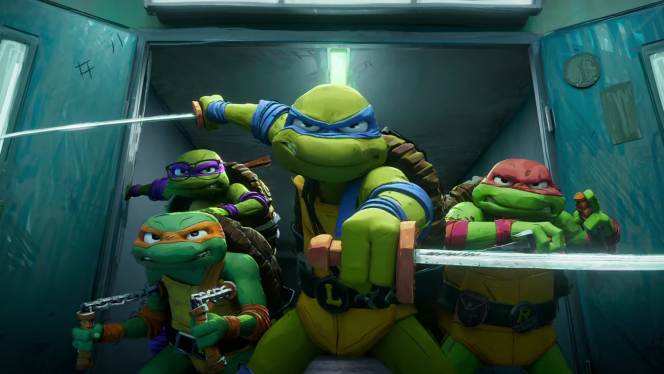
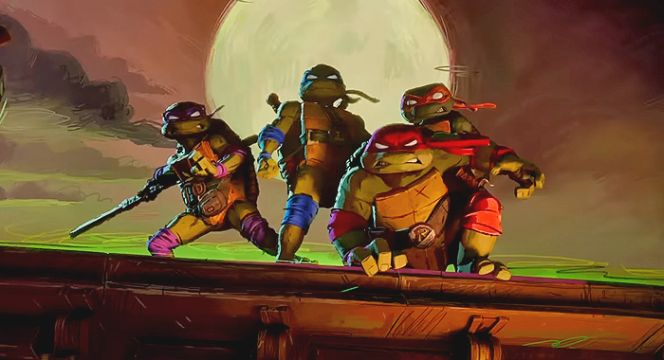
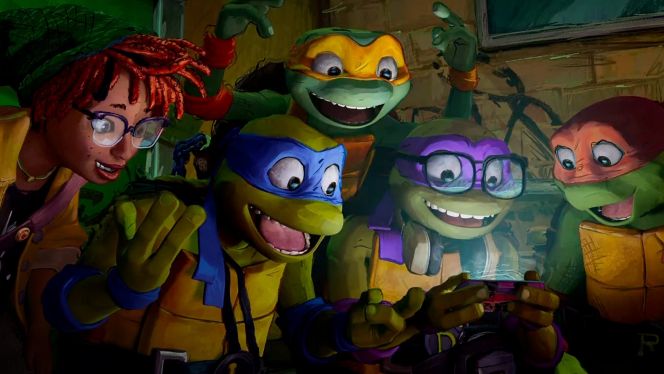
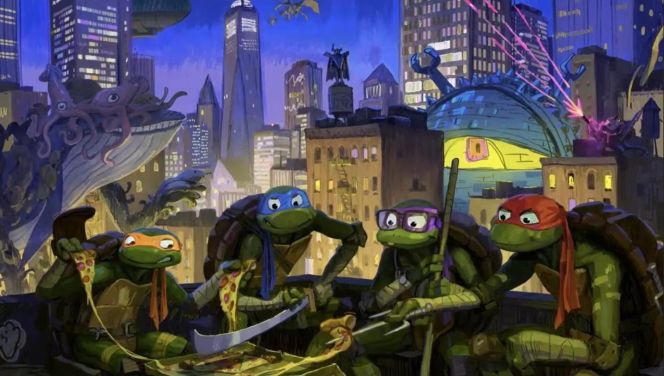
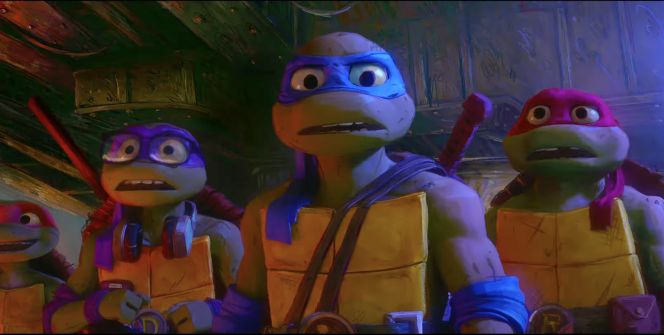
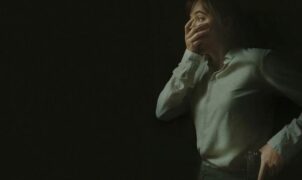
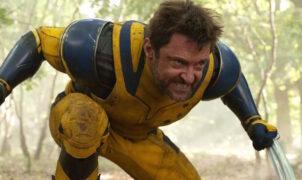
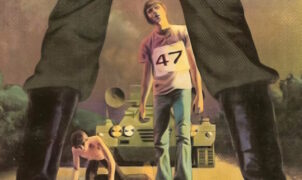
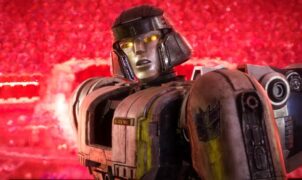
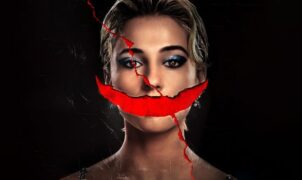

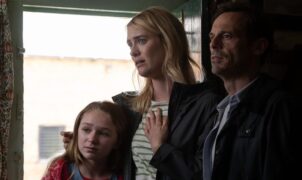
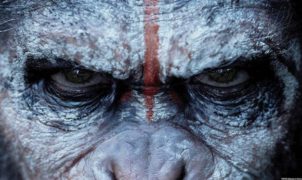
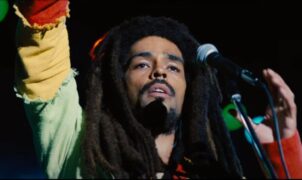
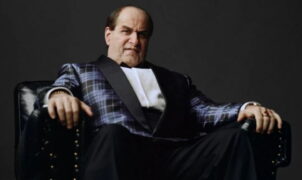




Leave a Reply